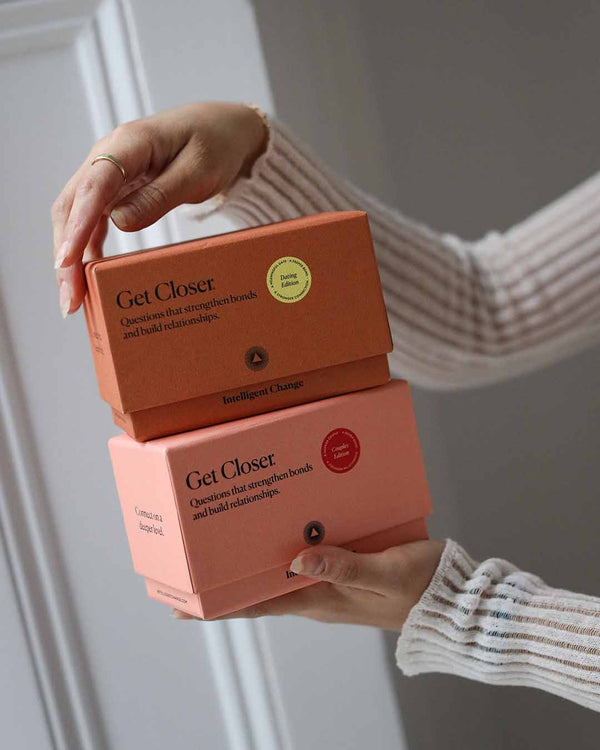5 Ways to Start Being More Sustainable
by Intelligent Change
In today’s day and age, learning how to be more sustainable is more than a trend—it’s an imperative.
As a consequence of the expansion of human civilization, our planet is suffering from the daily amounts of non-recyclable waste that humans produce. Plastic waste, food and water waste, energy waste, compulsive shopping, etc.—everything we use and purchase has an environmental footprint and consequence. If you’d like to put your daily choices under control, it’s time to get informed and take action.
In case you think that individual effort doesn’t count, let’s rethink this argument.
Why be more sustainable?
According to statistics, every American citizen produces an average of 2072 pounds of trash, originating only from their household. For the entire country, that’s like 254 million tons of trash per year. Daily, that’s some 4,5 pounds per person.
On a global scale, the world generates 3.5 million tons of plastic and other solid waste, which ends up in the oceans every day. This number has been growing for the past 100 years — 100 years ago, we used to produce 10 times less trash than we do now.
While these numbers may sound devastating, there are things we can do as individuals to make a change. Governmental measures and eco-business policies will play their important role, but changes in lifestyle can also create a positive change and help you produce as little as a single jar of trash per year.
___________
Daily Sustainability Practice: How to be more sustainable in your everyday life
Here are a couple of things you can do to improve your daily sustainability practice and produce less waste.
1. Eat Seasonal Local Food & Go Vegetarian

Hotels, schools, restaurants, and supermarkets throw away enough food to feed all of the world’s hungry. However, wasting food goes beyond humanitarian problems–it’s also an environmental issue, considering the amount of water and energy necessary to grow, harvest, package, and transport all that food.
Food that ends up in landfills produces methane as it rots, which makes up for 11% of total greenhouse gas emissions. If all the wasted food was a country, it would be the third highest producer of greenhouse gases, right after the US and China.
Supermarkets have changed the way we consume food–we tend to eat non-seasonal products that grow in greenhouses and whose transportation is one of the major contributors to the planet’s pollution, not to mention how the majority of these products are packed in plastic.
What can you do?
- Buy food from your local vendors and markets.
- Try to purchase seasonal fruits and vegetables.
- Make precise grocery shopping plans to actually use all the food that you buy.
- In order to cut down on food waste, plan your meals in advance.
- Practice plastic-free grocery shopping.
Animal agriculture around the world is responsible for producing more greenhouse gases than the entire world’s transportation systems together. The animals we raise for food produce many times more excrement than the human population. This causes river and lake pollution along with bacteria and virus contamination.
Furthermore, for every 1 gallon of cow milk produced, you need at least 4 gallons of water, plus the water needed for growing grass and feeding a cow. For every 1 pound of beef, you need roughly 1800 gallons of water.
Now imagine if the majority of people switched to a plant-based diet. We’d rationalize water expenditures and CO2 gasses emissions, not to mention that we’d be eating healthier food.
One person can save up to 219,000 gallons of water every year by implementing veganism and vegetarianism as a daily sustainability practice. Start simple:
- Try eating less meat.
- Go for quality over quantity.
- Eliminate one meat dish per week.
- Get into the habit of eating seasonally and locally.
2. Reduce and Reuse Before Recycling
We all know the “Reduce, reuse, recycle” catchphrase. Although many countries have sorting and recycling policies, that may not be enough, especially when you put it in a broader context–a lot of the waste is still non-recyclable.
This way, even if you responsibly sort your plastic, paper, glass, and general waste, there’s a lot more you can do before that step: reduce and reuse.
How can you reduce waste?
- Don’t buy pre-packaged groceries in the supermarket. Instead, visit farmers markets to buy fresh produce or go to specialized vendors who will measure and pack your products in paper wraps. Additionally, use containers or canvas bags when buying some groceries (fruits, vegetables, nuts, grains, etc.)
- Consider getting a water filter and say no to single-use plastic bottles.
- If you want to carry water with you or drink your favorite coffee on the go, invest in a good quality reusable bottle and cup. This would be a much cheaper and more sustainable option than buying plastic bottles and cups over and over again.
- Instead of purchasing hard-copy newspapers, subscribe to your favorite medium online. It will be cheaper and you won’t end up throwing it away.
- Plastic grocery bags are so old news, and reusable linen bags are forever. If you tend to forget to bring them to the store with you, simply put them on top of your shopping list, or keep a spare one in your bag or car.
- Avoid single-use food and drink containers and utensils, even for work. This means having your own washable and reusable coffee mug, set of silverware, a bowl, and a plate.
- Switch from liquid to hard soap. They usually come in carton boxes instead of plastic bottles. If you find a liquid soap that comes in a glass bottle–you can refill it later or reuse the bottle.
- When it comes to cosmetic products, consider experimenting with organic, home-made haircare and skincare products, or look for brands that use recyclable packaging and clean ingredients.
- Instead of purchasing household chemicals for cleaning, some of which can be toxic, try using multipurpose products you probably already have at home such as alcohol, vinegar, or baking soda.
Do you have plants at home or a garden? If yes, make compost from your organic trash and use it to feed your plants.
How to reuse products?
1. Avoid thin plastic packaging, as it’s usually non-recyclable and go for reusable glass or thick plastic.
How to reuse a glass jar:
- Use it to ferment and store food;
- Use it as a candle holder, flower vase, etc.
- Use it as a glass for juice, cocktails, or smoothies;
- Use it to store spices or pasta in the kitchen.
How to reuse a thick plastic package:
- Use it as a lunchbox;
- Store today’s lunch leftovers in it for tomorrow.
2. When purchasing clothes and shoes, don’t throw out the large plastic or paper bags, and carton boxes.
How to reuse large plastic bags:
- Use them to pack seasonal clothes and store other valuables that are rarely used and collect dust in your closet;
- Reuse them as grocery shopping bags.
How to reuse carton boxes:
- Use them to store things around the house;
- Use them for arts and crafts;
- Use them when moving to a new place.
3. If it’s absolutely necessary for you to buy plastic packaging, then consider reusing at least some of it before throwing it away.
Here’s how you can reuse plastic bottles:
- Use them to store liquids/home-made hygiene products;
- Get creative, decorate them and use them as flowerpots.
4. Turn your old or ripped cotton clothes into mops.
3. Purchase Wisely and Support Sustainable Brands

It's all of our jobs to make better, mindful choices about our daily decisions, brands we’re supporting and products we’re purchasing. Be more mindful with everything you consume, from fashion to books, home decor, and everything else. Buy what you need and monitor what you already have.
You can start by experimenting with buying pre-loved things, from vintage accessories and clothes to unique furniture and decor pieces. You can also give the things you no longer need a second life by selling them or simply donating them to those in need.
When shopping, the origins of the product you’re buying and the way it’s manufactured are two other important parameters you could consider. We recommend investing in timeless pieces–something of the good quality that you know will last for a long time.
Pay attention to some clothing brands that produce clothes out of recycled fabrics. You can also find sneakers, bags, notebooks, and even furniture pieces made of recycled materials.
These are called green industry businesses that use less water and energy in order to cut on their carbon emissions production and try to reuse the waste they generate instead of producing and tossing additional trash. By adopting the green policies, these companies minimize their environmental impact and act responsibly towards nature and their customers.
Intelligent Change Example
During 2020, we committed to review our full supply chain–from materials used in the products to manufacturing and disposal processes–to see where we can improve to lower our environmental impact.
Our newest products use Shiro Echo carbon neutral, 100% recycled, biodegradable, and FSC™ certified paper by Favini. No trees were cut down to create virgin paper to make our products.
Our journals are bound in 100% cloth based natural fabrics like cotton or linen that don’t contain synthetic materials such as polyester and plastic. This means they will break down in nature over time.
We also have removed the polyester stitching commonly used in book production to minimize the plastic used in our products. Instead, we either use vegan glue or opt for unsewn books with perfect bind spine. We are also working hard to make sure that the packaging of our products is plastic-free, from boxes to stickers.
Some of our products like The Five Minute Journal and The Best Year Journal come in a digital format or as a mobile app.
And we are committed to continue improving for a better future and making small steps into the right direction on a daily basis.
The main takeaway from this is that sustainably-minded consumers that are aware of the impact of their daily choices and who decide to live more consciously have a rising number of options nowadays. Industries are changing on a global level, with more and more sustainable brands emerging as we speak, and this is a trend that will make a positive change in the future.
4. Monitor Household Energy Use
Besides the physical trash we produce daily, we also unnecessarily waste a lot of energy. By changing the way we use our appliances, we are not only acting more responsibly towards the planet and doing something good for the environment, but we can also save some money, too.
Here’s how to do it:
- Turn off the lights when you’re not in the room.
- Turn off appliances that you’re not currently using.
- Be careful when purchasing appliances, invest in those that are energy efficient.
- Use a programmable thermostat, so it doesn’t overheat when you’re not home.
- Dry your clothes outside instead of using the drying machine.
- Use an electric kettle instead of the stove to heat up water.
- Replace incandescent light bulbs with fluorescent ones.
- Use natural light instead of turning the lights on as much as you can.
- Put on an extra layer of clothes instead of turning up the heating.
Here’s a list of appliances that waste the most energy, in case you want to rationalize their usage:
- Cooling and heating: 47% of the residential energy consumption
- Washer and dryer: 13%
- Water heater: 14%
- Lighting (incandescent light bulbs): 12%
The rest of the appliances such as the computer, oven, or refrigerator don’t make up for more than 5% of an entire household’s energy consumption.
If your government allows you to choose your electricity distributor, you can choose green and sustainable options. These are distributors that generate at least half of their power from renewable sources like the sun, wind and water.
5. Drive Green
While switching to electric or hybrid cars would be amazing, not everyone can afford such a big investment.
If you’re not ready to switch your your car that runs on gas for a more environmentally-friendly solution, there are other things you can do to reduce your carbon footprint:
- Drive more slowly and avoid hard accelerations or brake slamming.
- Remove heavy items from your vehicle if they’re not necessary.
- Try renewable fuels, like E85, which is a blend of ethanol, gasoline, and corn. If you’re driving a diesel vehicle, you might be able to give biodiesel B5 a shot.
- Check your tires regularly, as loose tires can contribute to enhancing the emission of pollutants by reducing your gas mileage.
- Shift gears in accordance with the terrain as this can make a real impact on your fuel economy.
- Consider using public transport, walking, cycling and using an electric scooter instead of driving on some occasions.
_________

We believe that every individual’s contribution to making our world a healthier and better place counts. If you can spare our planet from one plastic bottle, then do it.
We also understand that daily sustainability practice isn’t what most of us were taught in school. The majority of us grew up never wondering what happens with all the trash we throw away or how even the smallest of purchasing decisions we make every day (such as, for example, buying a pack of 6 bottles of still water for home) can negatively affect the planet. Luckily, we are the generation that can change all this.
Get informed and do whatever is in your power to practice and promote sustainable lifestyle. We all need to make a collective effort to reduce the unnecessary waste that’s destroying the only home we have–our planet.
Thank you for reading this article. Believe in your abilities to change the world, educate yourself about the best sustainability practices, start small and do something, and make conscious intelligent choices. And remember, improvement isn’t about perfection, it’s about the progress and commitment.









